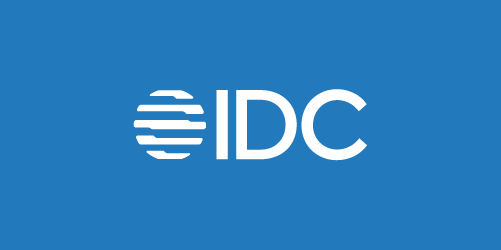LLM vector databases store vector embeddings for similarity search, but lack the structural data integration and contextual reasoning needed for RAG.
Why RAG can’t rely on an LLM vector database alone
As more enterprises recognize the value of Retrieval-Augmented Generation (RAG) for enhancing LLM accuracy and improving customer service, many have adopted LLM vector databases. In our recent survey of 300 enterprise technology leaders, 45% reported implementing RAG, and 44% are using vector databases.
LLM vector databases excel at handling unstructured data, such as user manuals, knowledge base documents, and internal websites. They’re optimized for storing, indexing, and querying high-dimensional vectors, making them particularly effective at deriving meaning or context in semantic search.
The main problem with an LLM vector database is that it’s not suitable for the structured enterprise data found in your CRM, ERP, SCM, and HR systems. So, if you rely solely on vector databases for your RAG architecture, your ability to deliver personalized, context-sensitive customer experiences is severely limited.
To fully realize the full potential of active retrieval-augmented generation, you should leverage data systems designed for structured data via LLM agents and functions. In this article, we'll explore why an LLM vector database falls short and how generative data products are emerging as the ideal solution.
RAG and LLM vector database adoption is on the rise
LLM vector databases are designed to store, index, and query high-dimensional data represented as vectors, such as Natural Language Processing (NLP), image recognition, recommendation systems, and other Machine Learning (ML) model outputs. They use techniques like embedding and chunking to process large amounts of text or data, converting text-based documents like user manuals, knowledge base documents, and internal websites, into vector databases.
Vector databases are better equipped to feed LLMs with large amounts of textual documents, because they excel in conducting large-scale similarity searches and enable fast query processing.
They offer several key advantages, such as:
-
Real-time search
Vector databases support LLM applications that require instant retrieval of similar textual items, such as recommendation engines, fraud detection, and AI personalization. This functionality is crucial for delivering real-time search results and creating responsive user experiences.
-
Enhanced similarity search
Vector databases are also great at conducting large-scale similarity searches to identify data points that are similar to a given vector. Similarity search is fundamental to image and video search, as well as textual search.
LLM vector database workloads
LLM vector databases support several key workloads, primarily in the area of NLP and text embeddings.
Vector databases play a crucial role in NLP for LLMs by enabling efficient storage, indexing, and retrieval of text embeddings. These embeddings capture the semantic meaning of words, sentences, or documents so that your enterprise LLM can perform tasks like semantic search, contextual understanding, and similarity matching with high accuracy and speed – attributes critical to running a RAG chatbot, for example.
NLP supported by LLM vector databases enables additional applications such as semantic search, RAG conversational AI, document retrieval, content recommendations, and anomaly detection, where understanding and responding to natural language inputs are key.
Another key workload is image and video search. Images and videos can be stored and indexed by an LLM vector database and used to retrieve similar content. Common use cases include media libraries, digital asset management, and social media platforms – where you can search for visually similar images or videos.
LLM vector database drawbacks
LLM vector databases are designed for specific use cases, particularly those involving high-dimensional data and similarity searches. However, they’re not appropriate for all types of data for several key reasons:
-
Lack of relational and structured data management
LLM vector databases are designed to manage unstructured or semi-structured high-dimensional data (vectors) but don’t support the same level of structured AI data management or complex relational queries from relational databases.
-
Limited transactional support
Vector databases typically prioritize speed and efficiency in handling high-dimensional vector data, which often comes at the cost of comprehensive transactional support.
-
Unsuitable for data warehousing
LLM vector databases are not designed for the kind of multi-dimensional analysis typical in data warehousing, where relational databases or specialized Online Analytical Processing (OLAP) systems would be more appropriate.
-
Optimized for high-dimensional data
Vector databases are designed to handle high-dimensional vectors, often with hundreds or thousands of dimensions. For low-dimensional data, traditional databases or other data structures are more efficient. The overhead of managing the complexity of high-dimensional indexing in a vector database can be excessive for low-dimensional data.
-
Difficulty ensuring regulatory compliance
Unlike traditional relational databases, which are well-established and built with mature security, auditing, access controls, and compliance features, LLM vector databases don’t meet the stringent requirements necessary for highly regulated environments yet. They commonly lack comprehensive audit trails, encryption features, or the robust access controls needed for adherence to regulations such as GDPR, CPRA, and HIPAA.
-
Inappropriate for low-latency, high-volume read/write operations
While vector databases are built to handle complex, high-dimensional data and similarity searches, they can’t match the performance of in-memory databases for low-latency read/write operations, making them less suitable for use cases where speed and simplicity are critical.
Enhancing RAG with structured data
Vector databases offer amazing innovation that enables your docs to become accessible to your LLM. With RAG tools, you can augment your LLM with the wealth of internal company knowledge, best practices, and policies found in textual repositories.
But that’s not enough. To complete the process of LLM AI learning, your LLM needs access your structured data from your enterprise systems. Only this complete picture will allow your LLM to provide the kind of personalized, grounded answers your customers deserve.
Using generative data products extends RAG to include structured enterprise data. The K2view Data Product Platform ingests and integrates multi-source structured data by business entity (customer, product, supplier, etc.), to create a real-time 360° view of each one. Data products retrieve your structured data in real time and inject it into your LLM via contextual prompts for accurate recommendations, information, and content users can trust.
Discover GenAI Data Fusion, the RAG tools
that leverage generative data products.
















